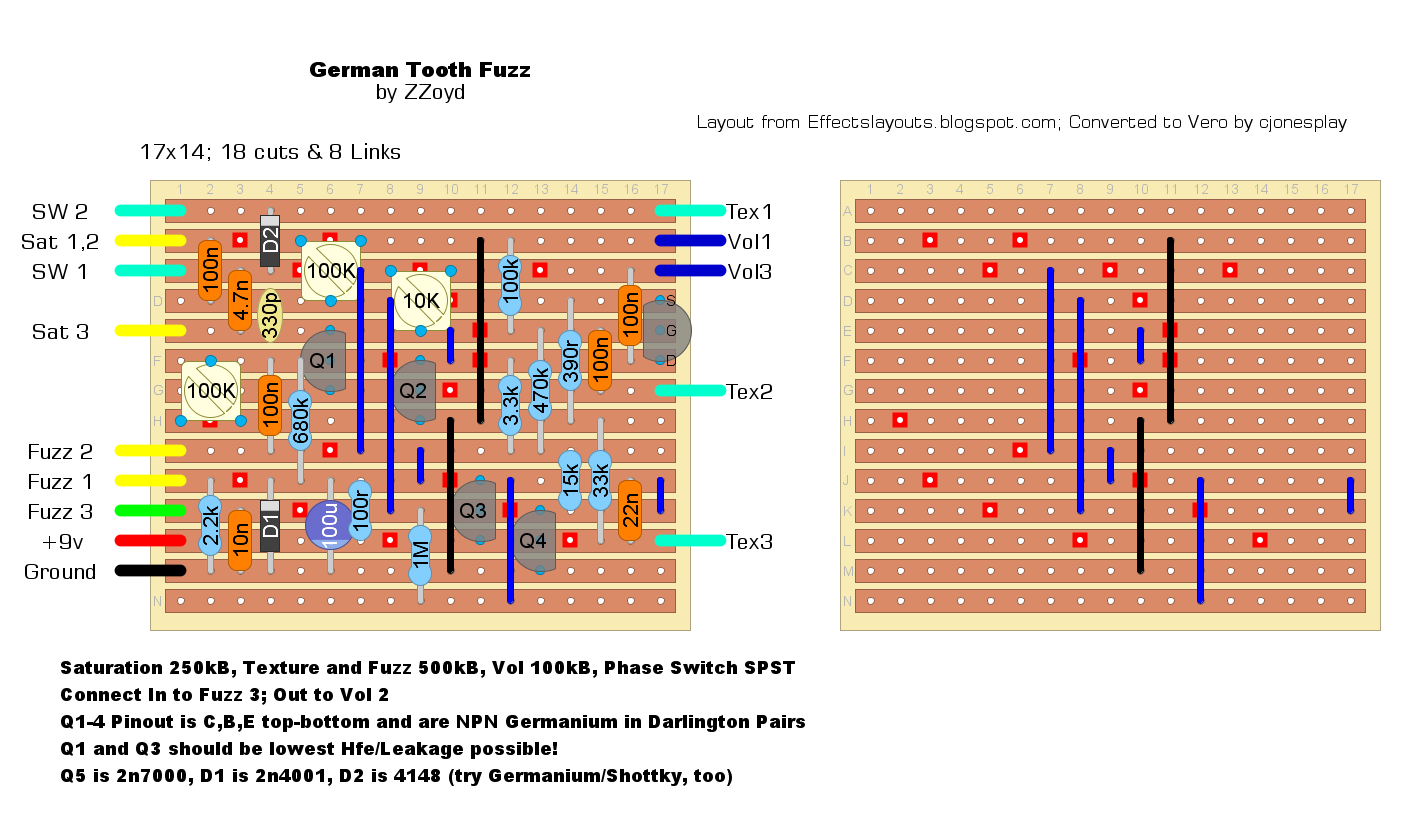While I'm still stuck here in quarantine mode I've made a few layouts. This one comes directly from Effectslayouts.blogspot.com (thanks for the great Perf/PCB layouts they do over there!) and it was originally designed by ZZoyd. Big thanks go to him, as I have been looking for new ways to use all my low-Hfe germaniums. It's the Basic Audio Spooky Tooth (based off the FuzzRite) with Darlington pairs NPN Ge's on trimmers, and it rocks!!

A couple of notes:
1) I have verified this myself, so let me know if there are any issues.
2) The Saturation basically acts as a second fuzz pot.
3) To bias: Adjust the L-most 100k Trimmer very carefully until you get the most volume. There was def. a tiny sweet spot on mine. Then, adjust the second 100k trimmer until you like the mids/bass. Turn the Texture down to dial in the 10k; it doesn't do a whole lot.
4) As for the Switch/Texture knob, Ryan Richardson gave an excellent explanation on Effects Layouts:
"Spooky Tooth is based on the Fuzzrite topology, which is two cascaded gain stages with a pot (labeled "Texture" here) that allows you to blend the signal from the first gain stage with the signal that's been through both. Since the two gain stages are out of phase with one another, you get cancelation of certain frequencies which causes really cool sounds at some settings but can also sound thin and hollow. In this version of the circuit, the signal from the first gain stage has to go though D1 to get to the texture pot, so you only get the part of the waveform that is above the forward bias voltage of the diode (so you get a little less than half the signal). Any noise or trash signals that are below the threshold at which the diode conducts will also be gated out. The switch shorts the signal path across the diode so you get the full waveform from the first gain stage. That explains why it doesn't make much difference unless the texture is set so that most of what you hear is from the first gain stage."